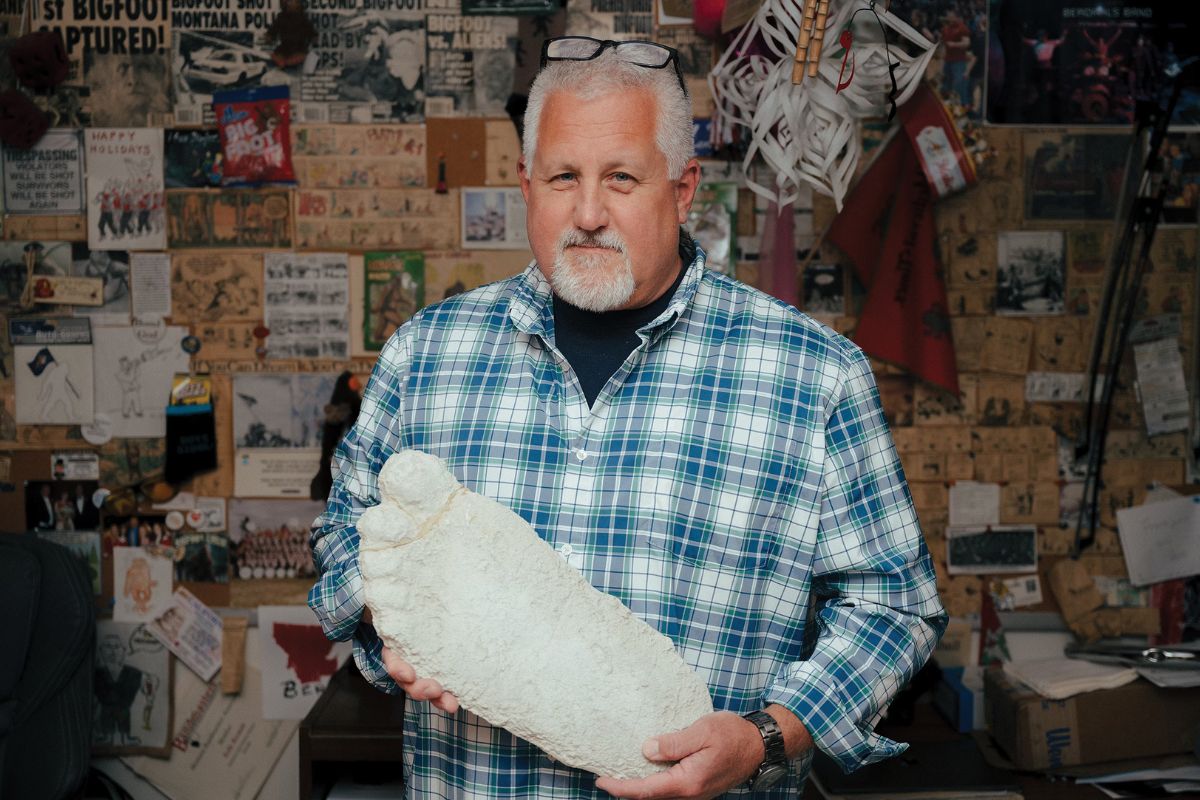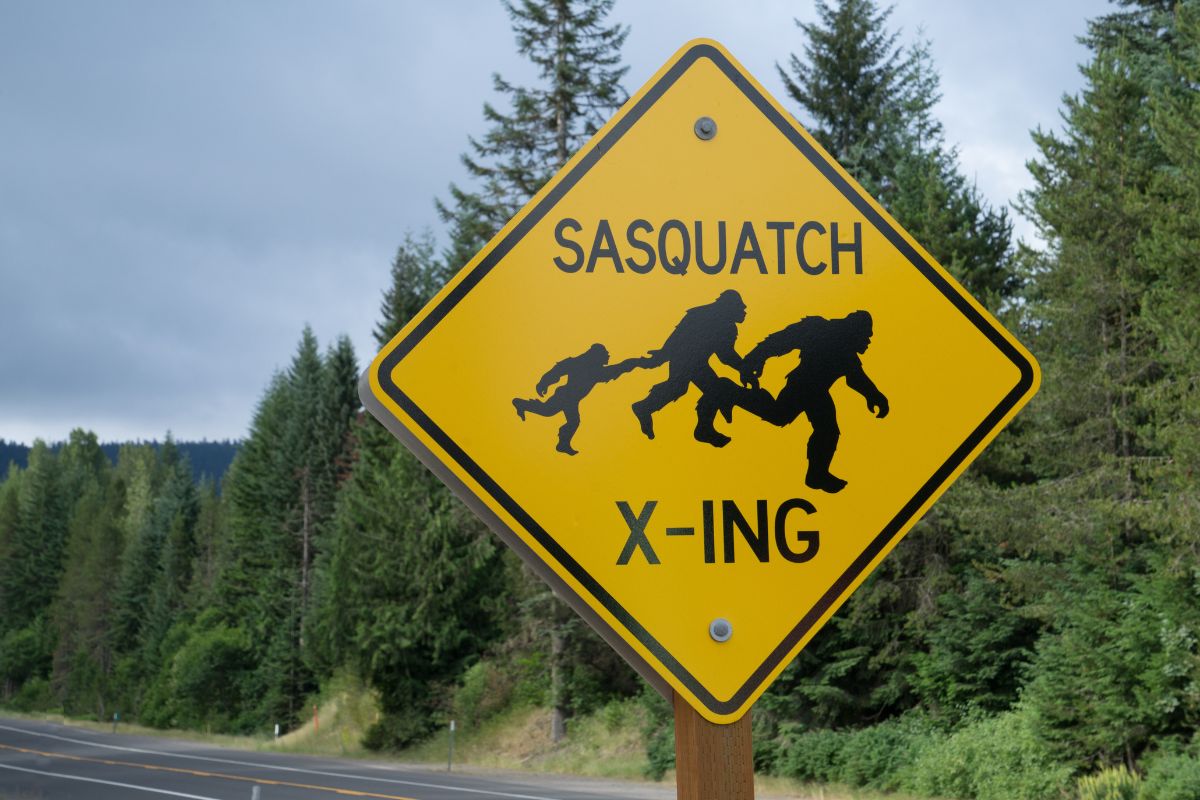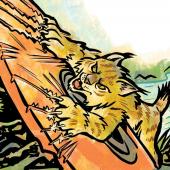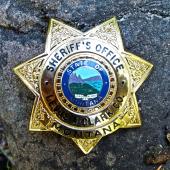Why I Believe in Bigfoot

A high-country rancher is surprised by an indescribable wail emanating from the timber adjacent to his southern pasture near Libby. A former deputy sheriff is jolted awake by an unimaginable roar from the ridge above his home near Missoula. Two children fishing with their grandfather stumble upon a line of 17-inch man-like barefoot tracks along a stream near Browning. A late-night truck driver is astonished to encounter a bipedal hair-covered humanoid figure crossing the highway near St. Regis with a dead deer under its arm.
These are just a few experiences, amongst dozens, being reported by fellow Montanans across the state, describing encounters with what is commonly known as sasquatch or bigfoot. I can hear you now, “Oh, c’mon, those aren’t real!” But have you ever asked yourself, truly asked, WHY they can’t be real?... Personally, I am convinced that we have been conditioned for decades by the wide array of media to brush aside this type of story as a ridiculous myth or tabloid farce.
 I have been involved in bigfoot research for 25 years and I am here to tell you that if you peel back just a couple layers of that saturated mockery and really look at the information available, you might be surprised at what you find. During my 40 years in Montana, have I seen one? No. But, let me share with you personal experiences and compelling arguments that might help explain why I believe:
I have been involved in bigfoot research for 25 years and I am here to tell you that if you peel back just a couple layers of that saturated mockery and really look at the information available, you might be surprised at what you find. During my 40 years in Montana, have I seen one? No. But, let me share with you personal experiences and compelling arguments that might help explain why I believe:
My story began while on an eight-year hiatus from Montana, teaching high school in central California in the late ’90s. Whoa, we got internet for the first time! Little did I know, my exploration of this new-fangled web, via the earliest search engines (remember AltaVista?), would land me two months later dining in a roadside lodge in a remote area of northern California, surrounded by a dozen complete strangers ready to kick off an actual bigfoot expedition… Led by former police officer John Freitas, and promoted through the Bigfoot Field Researchers Organization (BFRO), “Mission Night Scream” was the first of its kind; “call blasting” recordings of purported bigfoot vocalizations through the hours of night in hopes of hearing, and recording, return calls, with a response team at the ready. Did we discover an unknown primate? No. Was it terrifying? You bet. But, afterwards? Man, am I in! Searching the darkest forests on Earth at night in pursuit of a giant hairy monster?!?
All in.
The defining “hook, line, and sinker” experience for me, however, occurred several months later, when I initiated my own expedition, with five friends, to the Bluff Creek drainage in northern California. After blasting a few calls across the canyons, we hiked miles from a locked gate to a mountain lake, not another soul within 25 miles. At about 9:30 p.m., after setting up tents and cooking some dinner, we suddenly heard a weird whistle across a small meadow 50 yards away. It was immediately followed by the most intense, aggressive scream you can imagine, the ferocity of which seemed to peel the skin off your face! Quickly shining lights in the direction of the sound, we saw nothing… no eye shine, no movement, nada. Three hours later, the same sequence occurred, whistle and horrifying shriek, but in a seemingly calculated move, on the opposite side of our camp and much closer! Lights, cameras, action!… but our view was blocked by the thick foliage adjacent to our site. What was going on? Lastly, about 5 a.m., while still dark, the fateful whistle and blood-curdling screech from inside our camp. Before we could get out of our bags and tents, we heard one final scream out in the forest, fading out as it retreated.
And you thought I was “all in” before…
What happened next was a mixture of opportune and serendipitous timing. I joined the BFRO and was soon trekking through the forests with Bobo Fay (who immortalized the term “Squatchin’”), working with Matt Moneymaker (BFRO founder), and became good friends with Cliff Barackman, long before their “Finding Bigfoot” fame. Most importantly, however, those early BFRO connections allowed me to network with and learn from the top names of bigfoot research from the last fifty years. The magnitude of experience, history and knowledge of the topic was staggering. Additionally, a group of my students and I were featured on a Fox Family Channel episode of “Real Scary Stories: The Search for Bigfoot,” where aggressive growling chased the kids and camera crew back to camp. I was also part of a month-long documentary expedition on private land in the Oregon Cascades, where we recorded the sounds of something striking planks of sheet metal (remnants of old mining camps) in rhythmic patterns on multiple nights. I have also encountered thrown rocks, unidentified wood knocks, and sticks thrown directly at team members, in the Pacific Northwest and after returning home to Montana in the early 2000s.
So, beyond that, why do I believe?

Let’s start with the Patterson-Gimlin Footage. Filmed in October of 1967 in northern California, this is the ultimate and most recognized video/film footage of a sasquatch. Although debate has endlessly raged regarding the authenticity of the film, I hold absolutely firm on its legitimacy. The bottom line is that in 1967 it was not possible for someone to create a fur costume exhibiting the remarkable anatomical muscular detail and body fluidity found in the film subject. Secondly, my time in the research community led me to become friends with Bob Gimlin, the only other person alive who witnessed this event. He was riding horseback at Roger Patterson’s side when they rounded the bend in the stream and found the sasquatch crouched over the water. Now at nearly 95 years old, he has never varied from his account of the experience, never searched for notoriety, and truth be told, has endured decades of attacks on his character. Still a horse rancher in Washington state, this man’s honesty and integrity are without question.
Next, there is the Hairy Man Pictograph, found in a rock shelter within the Tule River Indian Reservation in central California. It is a nearly 1,000-year-old rock painting which depicts three large human-like figures covered in hair; a male, a smaller female, and a much smaller child. Interestingly, the painting includes only known animals from the area, including humans, of whom are clearly independent in design from the “hairy man." Subsequently, you might be surprised to find that nearly all indigenous tribes of North America have specific names for the sasquatch in their respective languages. These designations originated generations before the first European explorers stepped foot in North America.
Former FBI and police forensic investigator Jimmy Chilcutt provides my third reason. Chilcutt became one of the world’s leading specialists in the field of primate dermatoglyphics: studying the patterns of lines/ridges on the inner surface of hands and feet. Several bigfoot tracks, cast in extremely fine soil, were found to exhibit dermal ridges. After careful analysis of these casts, Chilcutt publicly offered the following conclusion: “I have found the striation patterns of these casts to be independent of both human and known primate. This may come as a surprise to many, but without a doubt there is a primate living in the forests of North America, and I stake my entire reputation on it.”

Just down the road at Idaho State University in Pocatello, there is a professor of anatomy and anthropology named Dr. Jeff Meldrum. Because of his incredible expertise in foot morphology, Meldrum has analyzed hundreds of sasquatch footprints and track casts (he now holds the largest collection of track casts in the world), from which he has identified anatomical details that can only be attributed to living creatures. The most prominent example of that is called the “midtarsal break” (midfoot flexibility), which means that while a bigfoot is walking, the midtarsal flex squeezes the soil and creates a pressure ridge (a small dirt hump) near the center of its track. This, along with other anatomical features found in similar tracks, is impossible to fake.
Next, there are numerous recordings of bigfoot sounds spanning the past fifty years. The similarities are uncanny. A terrifying scream recorded above the Klamath River (CA) in 1993 is nearly identical to a Snohomish (WA) scream, yet separated by over 500 miles and twenty years. Or, the “Ohio howl” of 1994 which closely matches those recorded by researchers in northern Washington in 2002. Better yet, highly unusual sounds recorded near Ennis (MT) have strikingly similar characteristics to those captured in the Sierra Nevada range (CA) in the early ’70s. The other consistent attribute? Witnesses all describe the overwhelming magnitude and power of these sounds.
And that brings me to the most convincing piece of this puzzle...the people. I have looked in the eyes of dozens of ordinary Montanans, from all walks of life, sharing their encounter stories with me. I found authenticity and surprise, excitement and fear. I saw genuine and burdened emotion resurface. Many didn’t know how to account for something that left their reality unhinged. These folks saw or heard something extraordinary and it left a profoundly indelible impact on their lives. So, I ask you, who are we to scoff, to judge?
Alas, it wasn’t my job to convince you. Rather, I hope I’ve encouraged you to consider, albeit critically, the possibility. To sneak a look just below the surface. And, if you’re a silent witness, or a landowner experiencing bizarre events, I’m here to help.
From the movie Predator: “There’s somethin’ in them trees, Major, and it ain’t no man...”













Leave a Comment Here